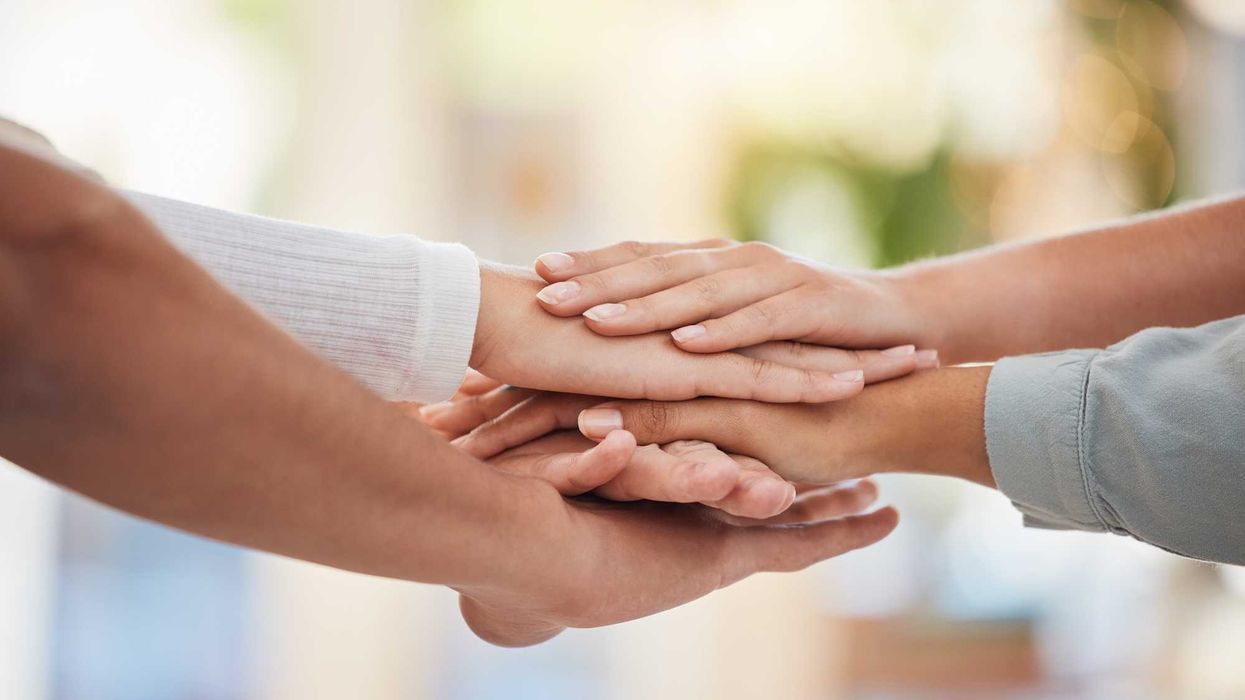Radwell is the author of “American Schism: How the Two Enlightenments Hold the Secret to Healing our Nation ” and serves on the Business Council at Business for America. This is the eighth entry in a 10-part series on the American schism in 2024.
As neither a neuroscientist nor an evolutionary biologist, I claim no particularly deep understanding of the amygdala. Nonetheless, I fear that this tiny part of our brain is wreaking havoc on our public discourse and driving the dysfunctional polarization that underlies the American schism today.
The almond-shaped amygdala is the brain’s command center for fear, anxiety and other emotions that, over the course of millennia, allowed our species to endure. Our distant ancestors’ reliance on its “fight or flight” response mechanism was fundamental to human survival. While we often crow about how evolved our species has become in the 21st century, we must remember that it is our lizard brain that governs our actions when stressed or threatened, when amygdala impulses often outweigh the rational parts of the brain.
To avoid a Hobbesian war of all against all, civilized societies since ancient times have found other benign methods of redirecting amygdala-sourced drives. This sublimation has taken various forms: The Greeks pioneered the Olympic games, within the Roman Colosseum spectators roared as brave fighters were torn about by wild beasts. And in the modern era, competitive sports, whether professional, collegiate or recreational, occupy a significant portion of our individual time and economic activity. It is hard to deny the power of that tremendous adrenaline rush in a stadium or arena when rooting for our side and dissing the opposing tribe. Indeed, in such environments we tolerate speech and behavior that are not only out of character, but which would be considered deplorable in different settings.
Curiously somehow, over the last 30 years we have allowed this same paradigm first to infect and now to dominate the landscape of our public discourse. Political scientists’ research — such as More in Common’s 2018 study, “ Hidden Tribes ” — has demonstrated that the nature of in-group and outgroup dynamics distorts the perception of our differences. In fact, our tribal identity conflicts are more divergent than our actual policy differences. In the same year, Lilliana Mason examined in “ Uncivil Agreement ” how members of a group, even one weakly affiliated, will make non-rational choices and thus tolerate inferior outcomes for all, in pursuit of the emotional satisfaction that results from ”winning” against the opposing group.
Significant implications result for these phenomena: Individuals in a group develop feelings of prejudice and anger towards the outgroup, as well as pride and loyalty toward in-group members. Further, the linking of group status with individual self-esteem renders any attack on the group as an attack on the individual, often motivating defensive counterattack.
The most salient takeaway from this research is that these feelings and behaviors are based on primitive human drives and not at all on rational thought. The fact that Americans share so much in common has become progressively obscured by an obsessive focus on how we sort into our socio-political group identities. The mechanisms that served as adaptive in our evolutionary history have now hijacked our political discourse. In sum, these tribal dynamics have crowded out coherent analysis and logical consideration in our political discourse.
It is difficult to overstate the gravity of this dilemma from two distinct angles. First, Americans perceive themselves as more divided than they actually are, especially when extreme voices dominate the airtime. But more importantly, this approach to public policy is completely counterproductive to effective problem solving. As successful business executives and entrepreneurs understand, problem solving requires the three D’s — data, details and determination — hardly the purview of the amygdala.
There is much ongoing debate regarding how we slid into this mess. While many factors are certainly at play, it is indisputable that the arrival of Republican Rep. Newt Gingrich on the political scene in the 1990s marked a major deterioration in bipartisan compromise. Eschewing respectful disagreement, he meticulously crafted, implemented and enforced a strategy of demonization of the opponent.
As The Atlantic reported:
“During his two decades in Congress, he pioneered a style of partisan combat—replete with name-calling, conspiracy theories, and strategic obstructionism—that poisoned America’s political culture and plunged Washington into permanent dysfunction. Gingrich’s career can perhaps be best understood as … an effort to strip American politics of the civilizing traits it had developed over time and return it to its most primal essence.”
Some examples of his repugnant tactics: disseminating within his caucus a specific lexicon of derogatory, emotion-laden terms to categorize opponents; and, with the arrival of C-SPAN, arranging a single TV camera to shoot the lawmaker speaking on the chamber floor with no ability to pan the room, thereby orchestrating routine theatrical tirades to an empty chamber.
Of course, the Democratic Party is also culpable — during long stretches of majority reign Democrats wielded abuses that routinely silenced or marginalized their opposition. In fact, over the subsequent years into the new century, establishment politicians of all stripes realized it was emotional triggers that mobilized voters much more effectively than rational problem solving. The media industry, dependent on a new business model based on outrage, was more than happy to oblige.
The implication for the American schism in 2024 is as clear in principle as it is intractable in crafting solutions: Unless we can individually distance ourselves from the pressures of our self-chosen “mobs,” we will fail in endeavoring to resolve our genuine policy differences. Perversely, the same group behaviors that helped early humans survive now threaten our collective capacity to resolve our most pressing societal challenges. The hope is that perhaps a new generation of Americans can come to the collective realization that this method of engaging with our fellow citizens is no way to solve serious problems, such as climate change, war and viruses. Perhaps only then can our species return to watching a football or ice hockey game to release primitive drives in lieu of doing so while viewing congressional hearings on news channels.


















